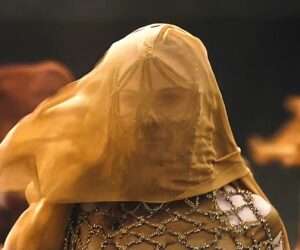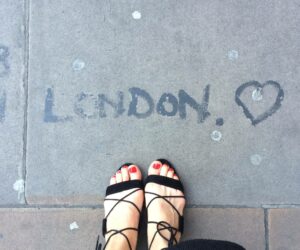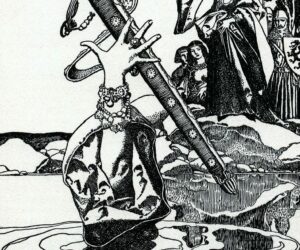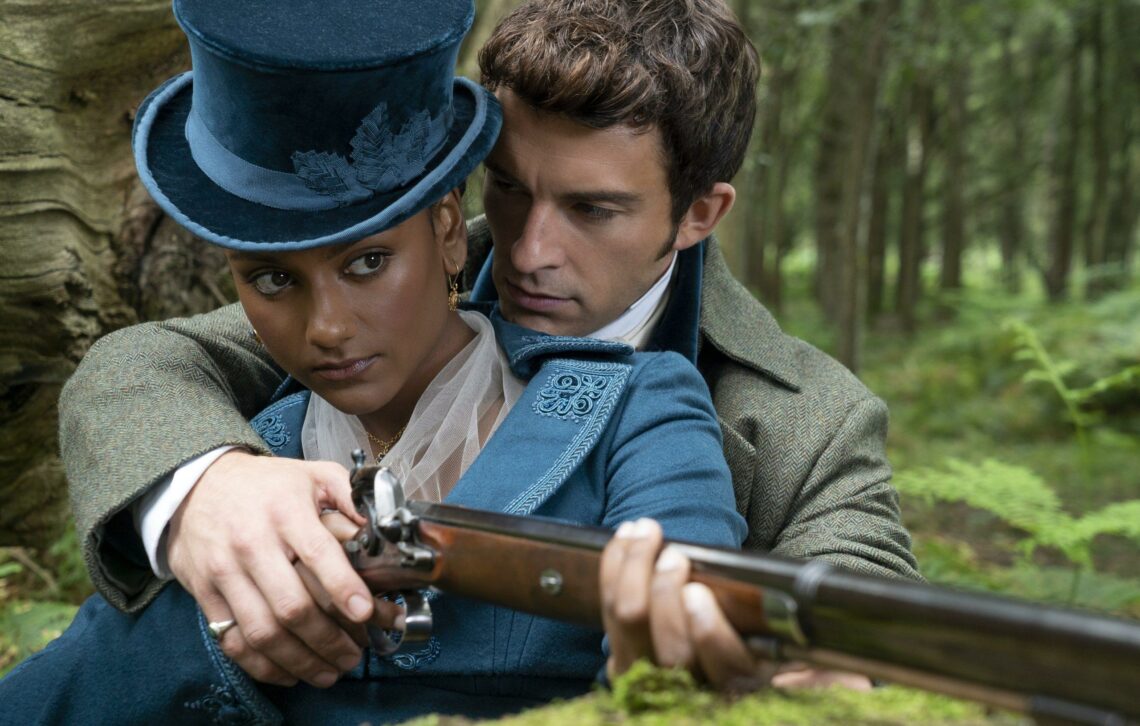
Color, Form, and Fashion: Glimpsing History in BRIDGERTON Season 2
1 – It's time for #Threadtalk, & we're tackling #bridgertonS2. Yes, there will be historical musing & gown swooning, a warning, dear reader: it isn't all pretty.
Why? Because the Regency period is steeped in Imperialism & appropriation by way of fashion.
It's complicated.

2 – I adore Regency fashion & enjoy Bridgerton. But I have a lot of questions about S2. I wish I had more answers, truly.
Given the frothy, wild vibe of Season 1, I consider the show a kind of alternate history. But where do we draw the line? And what role does fashion play?

3 – I'm not here to talk costume authenticity. But, if you've tuned in before, you know the impact of the British East India Company on India, both in fabric and culture.
This is made more complex with this season's prominent stunning Sharma sisters.

4 – Frankly, we wouldn't have Western Regency fashion if not for the terrors of the 18th & 19thC.
So, I guess my first question is, within the logic of the Bridgerton world: did Robert Clive not happen? Was the East India Company just NBD?😕

5 – Because, by watching the fashion of the season–which goes much closer toward history than S1–there are signs of India everywhere.
In some places, it feels beautiful, like the blue pashima that Kate wears in her quiet moments. That sacred garment *is* her inheritance.

6 – On the one hand, I love that this space exists in a fantasy where Imperialism isn't a consideration.
On the other hand, as a fashion historian, these are real materials that still mean a great deal to people who are still living.
Like I said, I don't know the answer here.

7 – I am all for joy for *everyone* in these stories. Heaven knows, we need more of it, in historical fiction and beyond.
And it's ultimately not for me to decide how it "should" be told. Where the line is drawn between reality & fantasy is a decision the writers make.

8 – So, now I'm going to talk about the costume themes & historical precedents in #BridgertonS2. Not historical *accuracy*.
First: Kate & TEAL. Lest you think her signature color is a modern invention, I'd like you to feast your eyes upon this 1818 gown, in Clarence blue silk.

9 – Kate's wardrobe was my absolute favorite, starting with that stunning deep deal velvet cape.
I mean, stars above. Taking off the hood and that LOOK is as iconic as Mr. Darcy waking through the mist.

10 – The embellishments of her dresses hearkened to the costumes of India (and Bollywood, certainly).
But *this* ensemble has my heart. It's a more European Empire style, but the combo of deep aubergine velvet, satin w/gold belt & jewels… I pretty much fell out of my seat.

11 – The dress, and quite a few in this season, are a slightly older style–but it makes for lovely contrast. This example, with gorgeous fichu and sleeves, is from the very tail end of the 18thC, via the Met.

12 – Now, Benedict. I really appreciated the expansion of colors & textures in S2 for the lads. Especially using more velvet (a big theme!) and vivid COLOR combo.
I really could have a fan account just for Benedict's waistcoats. The romantic artist even had a bee-patterned one.
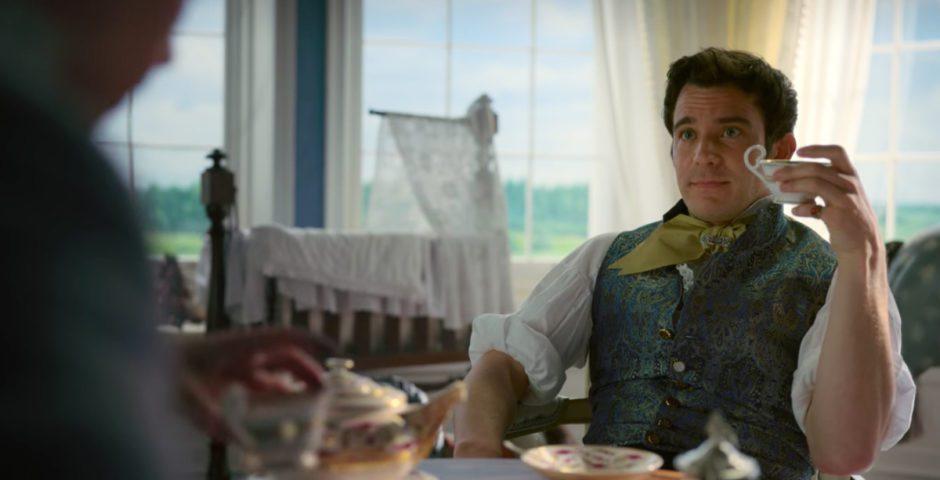
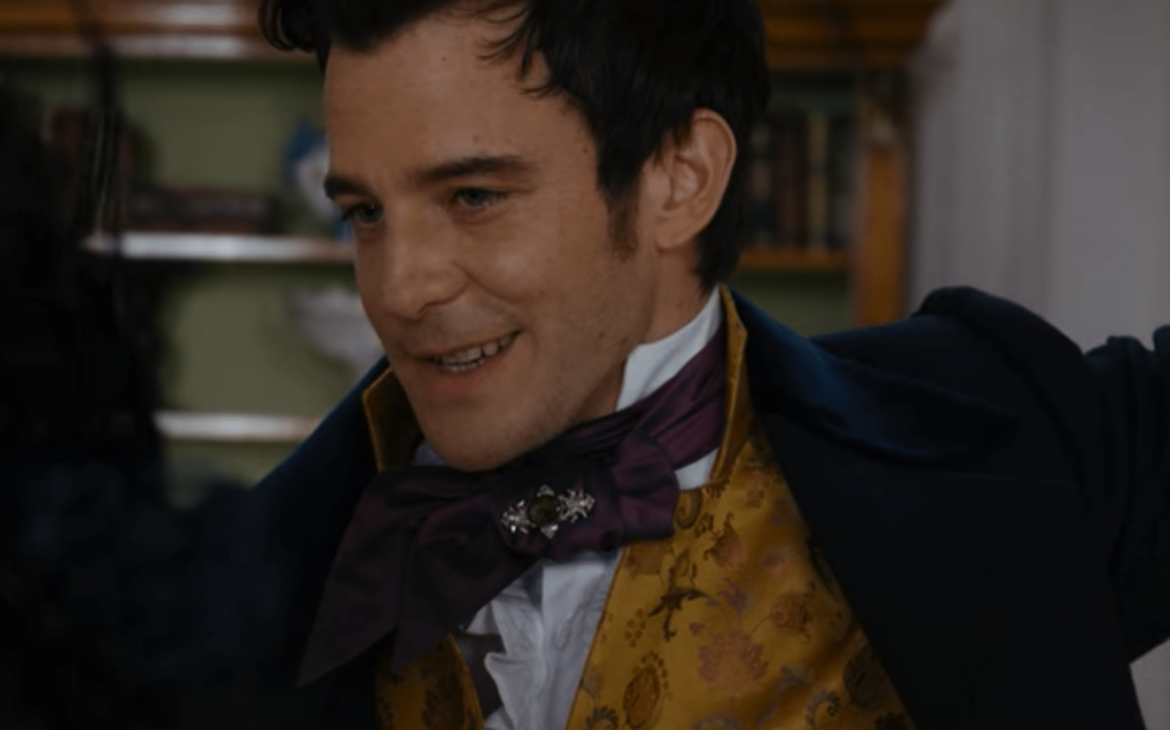
13 – Which is interesting, because by this period, there is a bit of toning down in menswear. I appreciate the pops of color for Benedict, especially given Anthony's very somber wardrobe.

14 – Penelope may not like the yellow dresses her mother makes her wear, but yellow Regency gowns are some of my favorites.
This one, ca. 1815, is just so bubbly and vibrant! Those sleeves, my gosh.
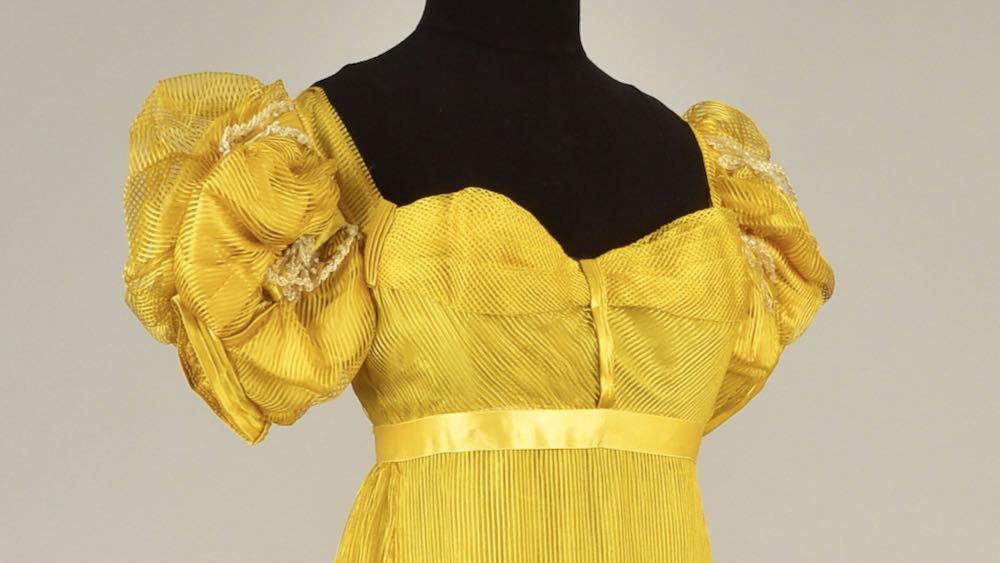
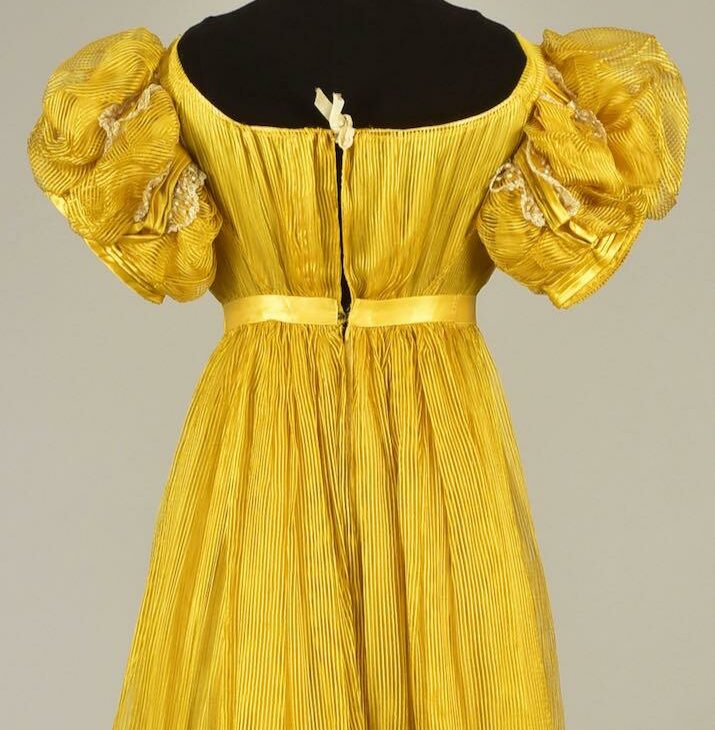
15 – Here's another saffron (and chartreuse) number from the same period that looks right out of Lady Featherington's book, down to those rosettes.

16 – Now, let's talk Adjoa Andoh'sLady Danbury and her incredible Redingotes. This woman also sported a ton of velvet this season, absolutely drawing attention to herself in deep jewel tones. A departure from S1 which had lots of paler hues.

17 – This stunning example is from Sweden, and looks right out f Lady Danbury's wardrobe. Not just anyone's redigote: it belonged to Josephine of Leuchtenberg, Queen of Sweden and Norway & dates from the 1810s.

18 – One criticism I do have, however, is that our characters seem to wear evening gowns everywhere. Even on the Pall Mall field. Which is a shame, because there's so many gorgeous cotton gowns of the era–perfect for running in.
This example from the V&A is quite Daphne.

19 – Another historical example of beadwork and metallic thread is actually this dress, one of my favorite evening gowns at the Met. The train gives me palpitations. The way the leaf motif shimmers is just remarkable. 1805-1810.

20 – And let's not forget color! This spencer jacket is from 1810, and it's still stunning. It may have faded a little to a bit of pink, but you can imagine what it must have looked like. The costume designers didn't have to make up the vibrant world of Bridgerton. It was there.

21 – Another gown I think would fit in with any bright character — perhaps Edwina — is this stunning example from 1810. The netting, in this case, is machine made, and the silhouette is rather narrow. Striking!

22 – And orange, you say? Was orange period? OH YES. This number is from 1807. Simple, but wow
This example is actually raw silk! And look at that lustre. Yes, she needs an iron. But what a remarkable hue.

23 – The one character I can't quite wrap my head around when it comes to costuming is Lady Featherington.
All I can think of are the costumes from the 1965 Cinderella film TV series I watched over and over as a kid.
I mean, it's uncanny!

24 – And how about some jewelry worthy of the Sharma sisters, and their dear (gorgeous) mama.
These date from the 19th century and are made of gilt brass. The filigree work here is lovely, and the little dangles would catch the light so beautifully.

25 – This necklace is likely a reproduction for sale to Britain, but it's a stunning one and dates from the 18th or 19th century. It's made of composed of diamonds, rubies, pearls, and imitation emeralds set in gold. Fit for a viscountess, perhaps?

26 – I could go on, of course.
S2 of Bridgerton definitely went up a notch in terms of costuming.
Heart eyes go to velvet, jewel tones, actual jewels, and the hints of history we glimpse in this fantasy Regency.
And this scene and Benedict's waistcoats.

27 – Some relevant links:
https://fashionhistory.fitnyc.edu/1810-1819/
https://ew.com/tv/bridgerton-season-2-new-characters/
https://www.thetimes.co.uk/article/the-relentless-rise-of-the-east-india-company-by-william-dalrymple-review-how-one-corporation-conquered-an-entire-continent-t3d7fx7tr
https://www.thetimes.co.uk/article/the-relentless-rise-of-the-east-india-company-by-william-dalrymple-review-how-one-corporation-conquered-an-entire-continent-t3d7fx7tr
https://www.vogue.co.uk/arts-and-lifestyle/article/bridgerton-season-2
28 – I hope you enjoyed this look into #bridgerton2. If you liked what you read, I do have a Patreon, where I share extra stuff about my research, book sneak peeks, and monthly classes on fashion and worldbuilding (and more!).
>>>
http://Patreon.com/nataniabooks
Originally tweeted by Natania Barron (@NataniaBarron) on March 28, 2022.



